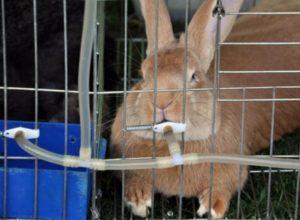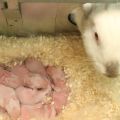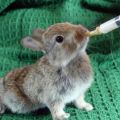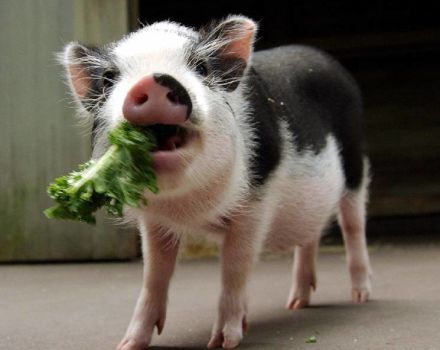How many times a day does the rabbit feed newborn rabbits and features
How many times a day does the rabbit feed her babies? Depends on a number of factors - from 2 to 5 times a day. It is not easy to catch this process - animals prefer the dark time of day for feeding. Yes, and disturbing the nest during feeding is undesirable - for confident growth, the rabbits need rest. Whereas the additional noise and feeling of newborns can cause them stress, which will result in slower growth.
How does a rabbit feed newborn rabbits?
Feeding preparation begins even before the babies are born. A week before the onset of labor, the expectant mother begins to build a nest. The materials used are hay and the rabbit's own fluff, which she pulls out from the belly around the nipples. This is done not only to create a warm and cozy place, but also to facilitate access to nipples and milk. After all, in rabbits newborns are blind and naked - they are completely helpless.
The mother starts feeding soon after the end of labor. It is desirable that the number of rabbits matches the number of nipples. Then the rabbit will be able to feed all the babies herself with milk. In case more are born, the process should be arranged so that several females give birth at the same time.
Feeding problems
The bunny may refuse to deal with her bunnies. You can understand this by the squeak, crawl and disheveled appearance of the latter. Otherwise, rabbits have a smooth skin and a full belly. If you find problems, you should investigate their cause. The most common are:
- Small amount of milk. The most likely reason is the wrong diet. It is solved by adding juicy root vegetables, scalded nettle, dried parsley, dill and carrot tops. Dairy products are used to stimulate lactation, as well as regular milk.
- There are more offspring than the female can feed. This is where pure physiology comes in. The solution is to add a less large rabbit, after wiping the foundling with fluff taken from its new nest.
- Refusal to feed. Occurs because of wild hunting. In most cases, mating helps. Force-feeding may be necessary to awaken the maternal instinct in the young. This provides for the retention of the rabbit with the simultaneous laying of the babies.
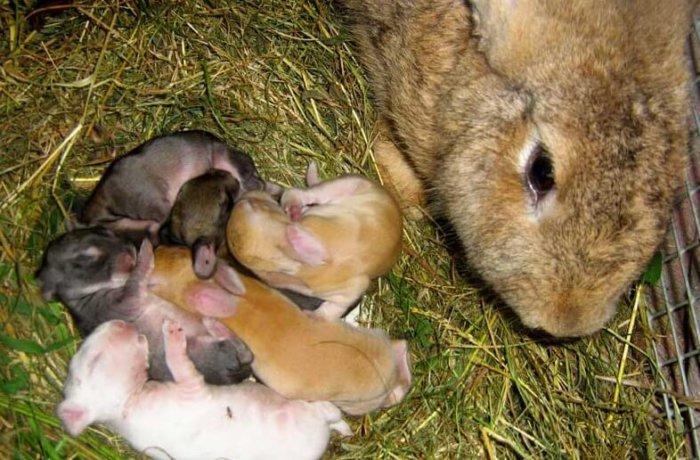
How many times a day?
Newborn rabbits should consume 5 milliliters of milk per day. This diet is consumed for 2-5 meals a day. It often seems that the rabbit is not doing what she should be doing - she can sit, feed, do nothing. This often causes groundless concern - it is necessary to monitor the babies. At nightfall, the female will dive into the nest and begin to feed the rabbits.
Detached behavior is associated with instincts. Rabbits that live in natural habitats have a strong odor.
In order not to attract the attention of predators, they try to move away, hide under the shade of trees, and feed there, not losing sight of the mink. On the day, the rabbit needs to eat enough to produce 50-170 milliliters of milk. If there is no concern from the little ones, there is nothing to worry about.
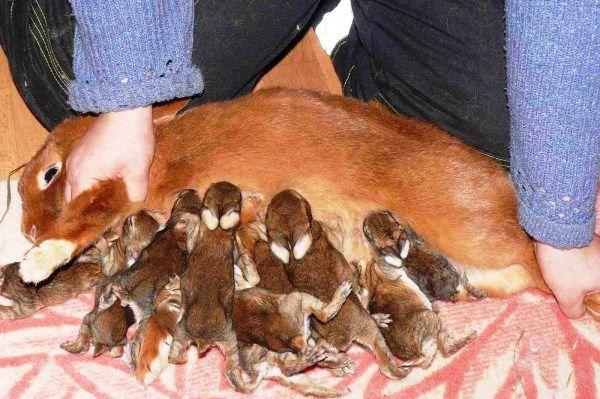
How long will she feed the cubs?
On average, 45 days is sufficient. If frequent mating is practiced, the rabbits can be removed earlier. For boilers, the term is increased to two months. At the same time, it is important to prepare them for an independent life.
After about 10 days, the baby's eyes will begin to open. The rabbits will begin to move around the nest and even the entire designated area (a special case - a cage). In the third or fourth week of life, the appearance of rough food is permissible in their diet. But the exclusion of milk from it at this stage is contraindicated. The young should be removed when it is already formed and well oriented, although if the milk has disappeared and does not appear for 3-4 days, then lactation cannot be returned.
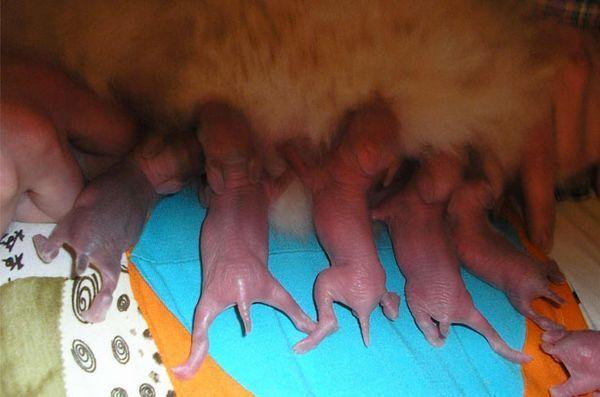
How many babies can one rabbit feed?
Universal formula - as many as nipples. There are a number of exceptions - a dairy rabbit can feed more than 10, in case of problems with lactation - up to 6. In everything, you should know when to stop. If a female has brought 15 babies, the probability that she herself will be able to cope with them tends to zero.
Why, even if the female can provide more rabbits than there are nipples, is it advisable to move to another rabbit? This is due to the fact that good nutrition will be available only to the strongest, who will trample the weak.
And this applies not only to the offspring itself - even the mother herself can be the cause of death. After all, with large okrolov, mostly weak rabbits are born.

